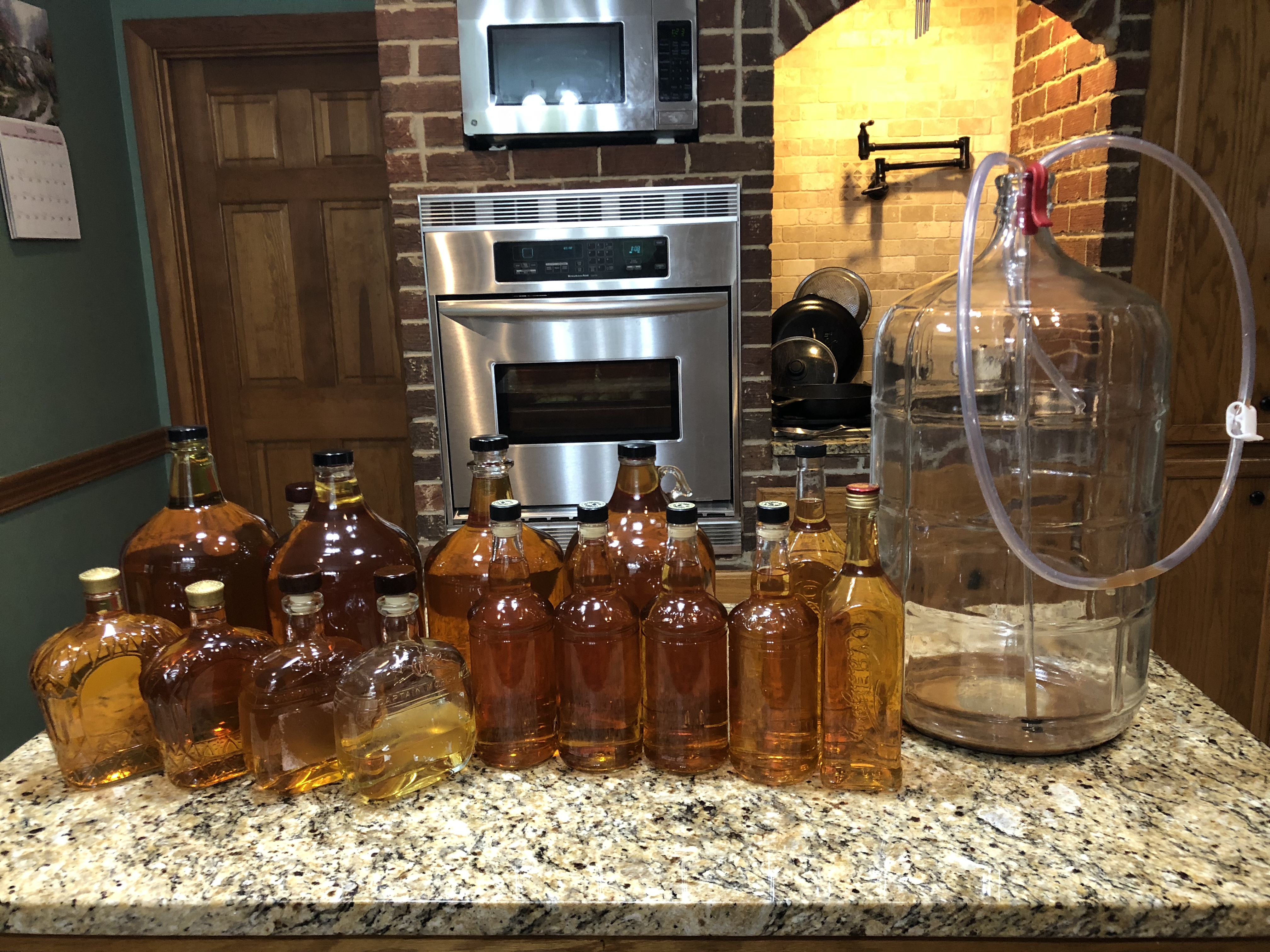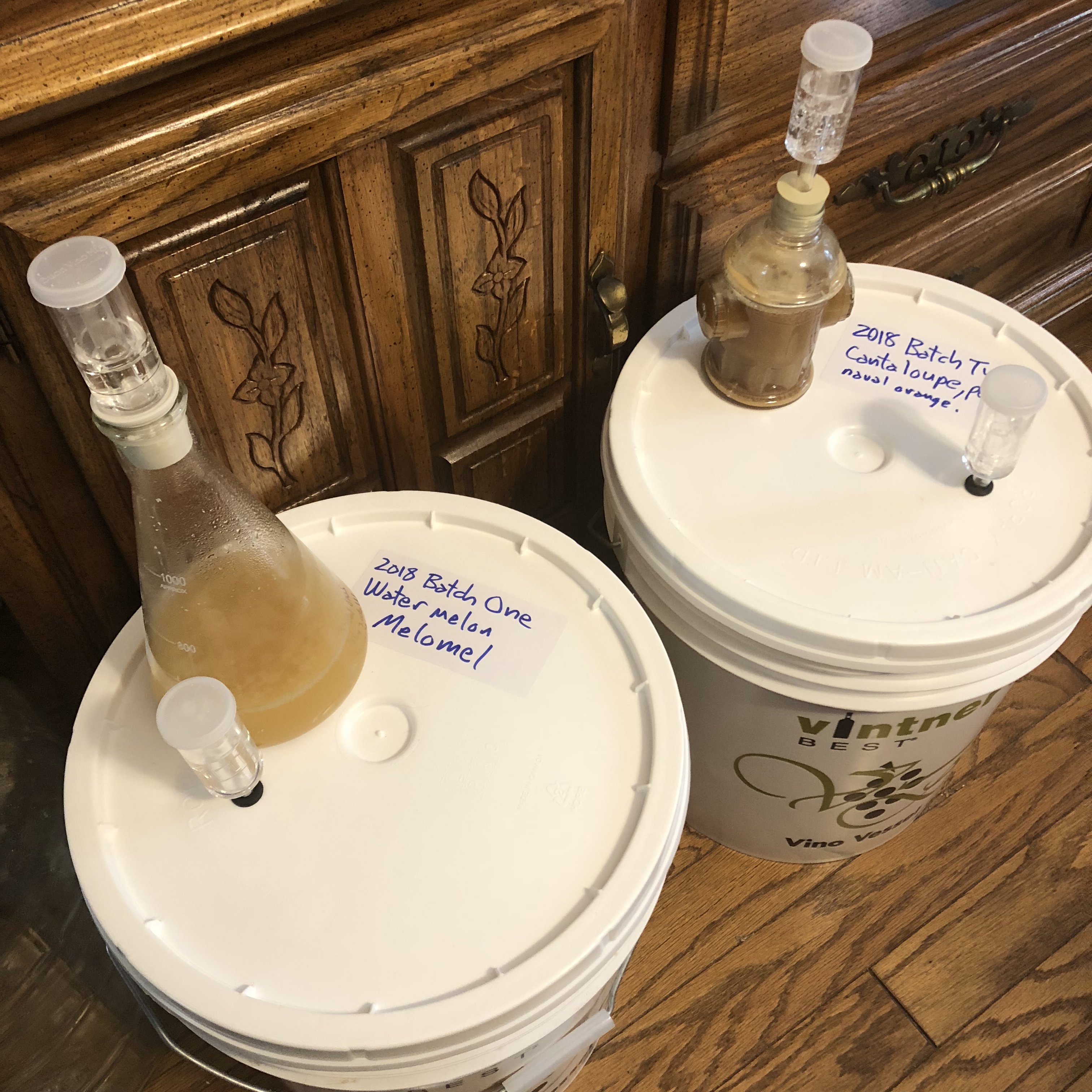I'm going to continue posting in this thread as my "Mead/Melomel Journal." I will be posting my recipe notes, pictures, aging, bottling and other info here. Even so, I welcome any conversation/questions/comments and such about my mead...
...Well, the original 2014 batch is almost gone and the 2018 batch, after bulk aging for four years, has an off flavor of wet cardboard/dirt and is not enjoyable. I attribute that to uncontrolled fermentation temperatures.
The 2018 batch of Watermelon Melomel is disappointing too with the same type of off flavors, and since these were fermented side by side on my dining room floor with the same yeast, that is to be expected.
Instead of dumping, I'm holding on to these two batches for a future project.

Now that I have a fermentation chamber to control temperatures I'm going to start a batch of elderberry melomel this weekend, since I have about four pounds of dried elderberries in the freezer. Then later this summer when local cantaloupes and peaches are available I'll make another batch of my cantaloupe melomel.



























![Craft A Brew - Safale S-04 Dry Yeast - Fermentis - English Ale Dry Yeast - For English and American Ales and Hard Apple Ciders - Ingredients for Home Brewing - Beer Making Supplies - [1 Pack]](https://m.media-amazon.com/images/I/41fVGNh6JfL._SL500_.jpg)

































